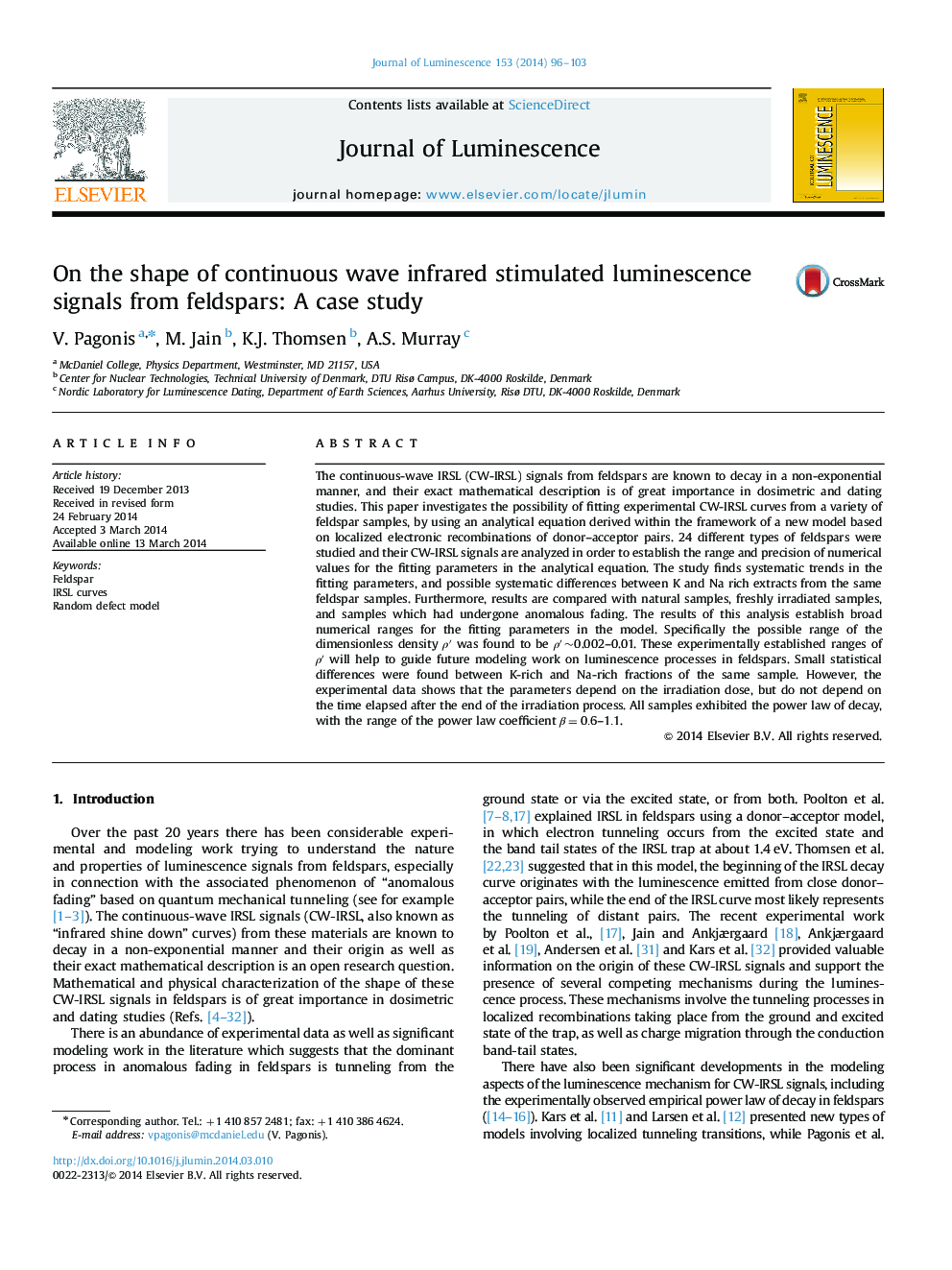| Article ID | Journal | Published Year | Pages | File Type |
|---|---|---|---|---|
| 5399667 | Journal of Luminescence | 2014 | 8 Pages |
Abstract
The continuous-wave IRSL (CW-IRSL) signals from feldspars are known to decay in a non-exponential manner, and their exact mathematical description is of great importance in dosimetric and dating studies. This paper investigates the possibility of fitting experimental CW-IRSL curves from a variety of feldspar samples, by using an analytical equation derived within the framework of a new model based on localized electronic recombinations of donor-acceptor pairs. 24 different types of feldspars were studied and their CW-IRSL signals are analyzed in order to establish the range and precision of numerical values for the fitting parameters in the analytical equation. The study finds systematic trends in the fitting parameters, and possible systematic differences between K and Na rich extracts from the same feldspar samples. Furthermore, results are compared with natural samples, freshly irradiated samples, and samples which had undergone anomalous fading. The results of this analysis establish broad numerical ranges for the fitting parameters in the model. Specifically the possible range of the dimensionless density Ïâ² was found to be Ïâ²~0.002-0.01. These experimentally established ranges of Ïâ² will help to guide future modeling work on luminescence processes in feldspars. Small statistical differences were found between K-rich and Na-rich fractions of the same sample. However, the experimental data shows that the parameters depend on the irradiation dose, but do not depend on the time elapsed after the end of the irradiation process. All samples exhibited the power law of decay, with the range of the power law coefficient β=0.6-1.1.
Keywords
Related Topics
Physical Sciences and Engineering
Chemistry
Physical and Theoretical Chemistry
Authors
V. Pagonis, M. Jain, K.J. Thomsen, A.S. Murray,
